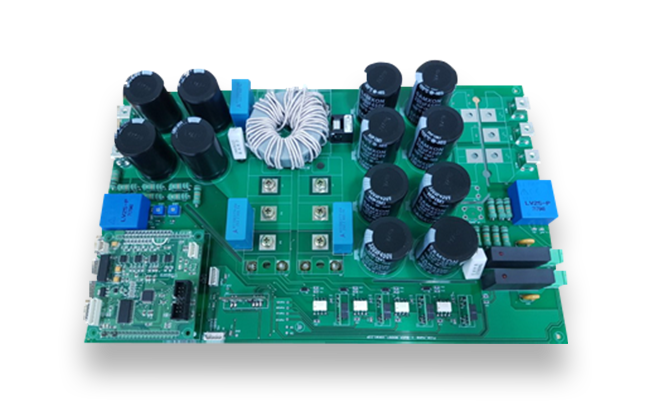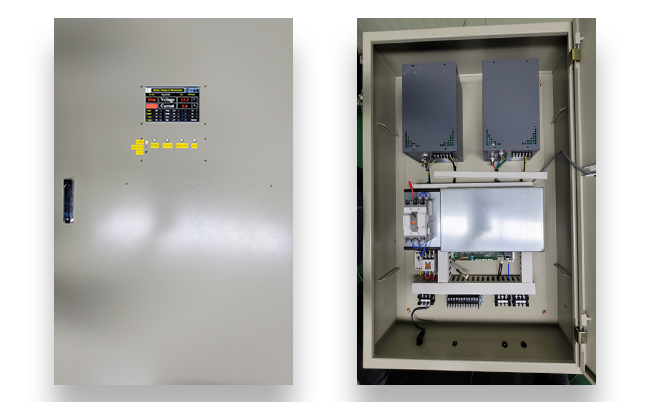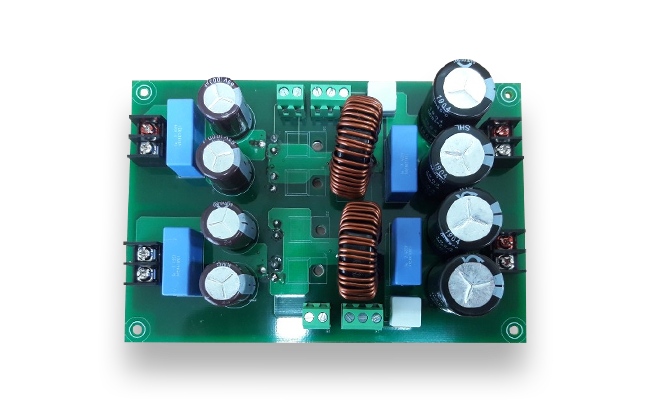

It is a low-cost converter with high efficiency to which the doubler-type topology for driving a vehicle motor is applied.
| Input voltage | 12V~14V | Maximum input current | 40A |
|---|---|---|---|
| Output voltage | 20V~28V | Maximum output current | 20A |
| Rated output | 500W | Switching frequency | 18.6KHz |
| Conversion efficiency | 93% | Features |
|
| Application areas | The firms that need a power conversion device for driving an automotive motor |


The automotive inverter applies single-phase full-bridge topology and supports sinusoidal wave output.
| Rated output | 3KW(Max 4KW) | THD (MAX) distortion | 20% |
|---|---|---|---|
| Input voltage | 220VAC, 310VDC | Output ratio Voltage drop | (±5%) |
| Output voltage | AC220V(±5%) | Conversion efficiency | 90% |
| Output frequency | 60Hz | Switching frequency | 25Khz |
| Output waveform | Sinusoidal waves | No load current | 0.61A(no fan), 1.13A(on fan) |
| Application areas | Power conversion for commercial and special vehicles and automotive motor control | Features | Sinusoidal wave output through repeated power supply and regenerative mode in high-performance DSP adoption and switch control |


Electronic load System has a type of multi-level interleaved converter.
| Rated power | 120KW | Maximum rated current | 160A |
|---|---|---|---|
| Voltage range | 0~75V | Features |
|


The metering equipment is used to estimate xEV reusable battery parameters.
| Features |
|
|---|


The protection current auto control system is based on impedance estimatino.
| Features |
|
|---|